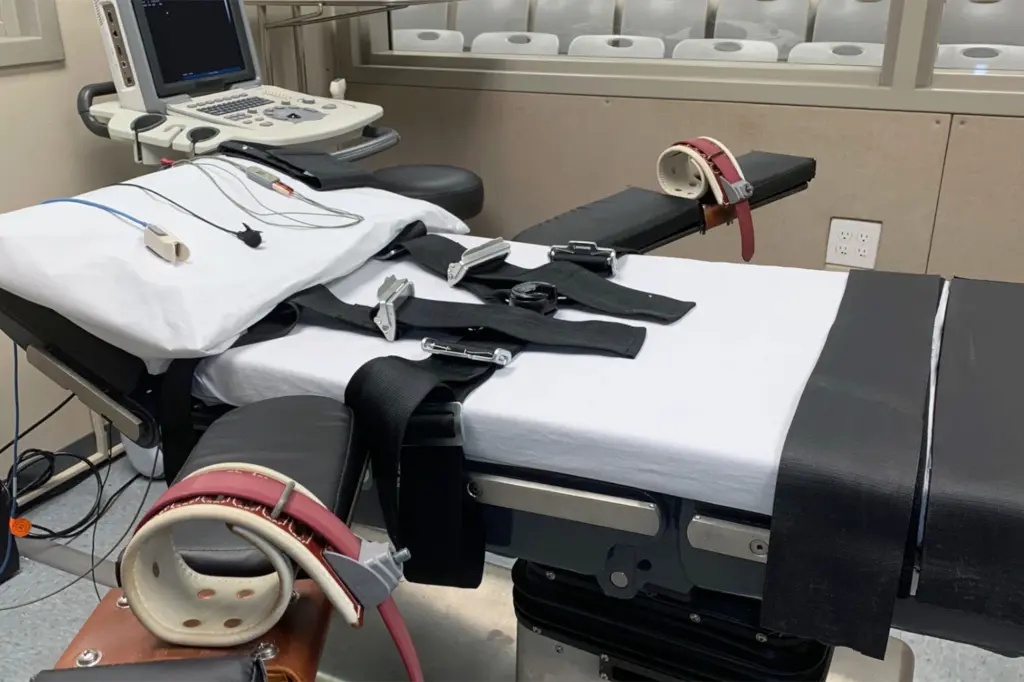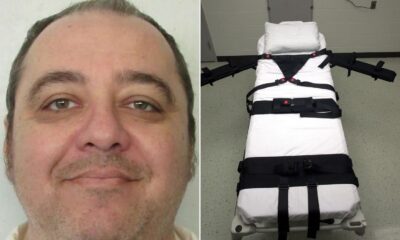NEWS
Six notable prisoners who were executed by lethal injection

Lethal injection has been a common method of execution in the United States, creating serious ethical and legal concerns. Six prominent executions stand out for their unusual circumstances and the discussions they spark about justice and capital punishment.
From Ted Bundy, who was executed for murder in 1989, to others facing similar fates, these people demonstrate the intricacies of crime and punishment. Their experiences have sparked ongoing debates regarding the death sentence and its ramifications in today’s society.
Here are five notable prisoners who were executed by lethal injection:
Ted Bundy (Executed in 1989)
Ted Bundy was a notorious American serial killer responsible for the murders of at least 30 young women during the 1970s. His charm and intelligence initially helped him evade capture, but he was eventually convicted of multiple murders. Bundy was executed by lethal injection in Florida on January 24, 1989, after years of legal battles.
John Wayne Gacy (Executed in 1994)
Known as the “Killer Clown,” Gacy murdered at least 33 young men and boys between 1972 and 1978 in Illinois. He would lure them to his home, sexually assault them, and then kill them. Gacy was executed by lethal injection on May 10, 1994, at the Stateville Correctional Center in Illinois.
Timothy McVeigh (Executed in 2001)
McVeigh was responsible for the 1995 Oklahoma City bombing, which killed 168 people and injured hundreds more. The bombing was one of the deadliest acts of domestic terrorism in U.S. history. He was executed by lethal injection on June 11, 2001, at the Federal Correctional Complex in Terre Haute, Indiana.
Aileen Wuornos (Executed in 2002)
Wuornos was a female serial killer convicted of killing seven men between 1989 and 1990. She claimed the killings were in self-defence during attempted assaults while working as a prostitute. Wuornos was executed by lethal injection on October 9, 2002, at Florida State Prison.
Angel Nieves Díaz (Executed in 2006)
Díaz was convicted of killing a Miami bar manager during a 1979 robbery. His execution became controversial due to claims of innocence and the complications that arose during the lethal injection. Díaz was executed by lethal injection on December 13, 2006, in Florida. His execution took longer than usual (34 minutes) due to problems with the injection, sparking further debate over the method.
Emmanuel Littlejohn (2024)
In Oklahoma, 52-year-old Emmanuel Littlejohn was put to death by lethal injection for the 1992 murder of Kenneth Meers during a convenience store heist. He blamed his accomplice, Glenn Bethany, who was given a life sentence, for shooting Meers, even though he acknowledged being at the site.
Some members of Meers’ family were against the State Board of Pardons’ recommendation to commute Littlejohn’s sentence in August. “Governor, don’t kill me for the heck of it,” Littlejohn begged Oklahoma Governor Kevin Stitt to step in, but Stitt turned him down. In reference to the murder of Kenny Meers, Attorney General Gentner Drummond declared that “justice has been served.”
Lethal injection has been the primary method of execution in many U.S. states and is often a subject of controversy due to ethical concerns.



